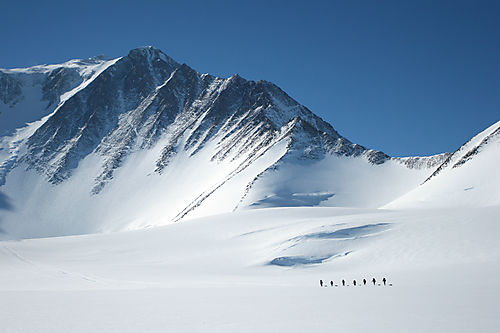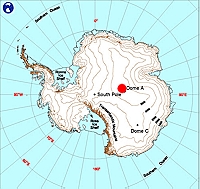I am guessing that most of you will have had, at least, your first A2 Geography lesson and so I thought I would just do a quick round up of what I have learnt so far in the new module - Development and Globalisation!
What excatly is development?
Development is the process of social and economic advancement which leads to an improvement in people's quality of life and general wellbeing.
Different people percieve development in different ways and so they will, accordingly, determine development using different indicators. However, there are some common indicators which we associate with developed countries. These can be classified using
SPEED - something I think we might be using a lot in this year!
Social
- access to sanitation
- low ratio between doctors:patients and teachers:students
- emancipation of women
- equality in terms of education and career oppurtunities
- multiculturalism (often allowed to occur due to open door policy on migration)
- no discrimination against gender, sexuality or race etc
- human rights upheld
Politcal
Economic
- high GDP per capita
- imports and exports
- good level of employment - especially in the higher sectors
Employment Sectors:-
- Primary = farming or mining
- Secondary = any manufacturing or refinement
- Tertiary = shops or any similar services
- Quaternary = education
- Quinary = high level finance and research and development
Enviromental
- energy supply and comsumption
- environmental targets such as the Kyoto Agreement
- organic farming and similar examples of stewardship
- protection and conservation
Demographic
- low CBR and CDR and high LE
- high stage of the Demographic Transition Model
- steady/decline in population growth
Although we often use these indicators to determine development, it cannot be accurately assessed using just one indicator. Instead composite indicators are used........
Physical Quality of LIfe Index (PQLI)
---> Literacy rates
---> Infant mortality
---> Life expectancy at the age of one
- It was developed in the 1970's due to peoples dissastisfaction with the use of GDP
- It is criticised as there is considerable overlap between infant mortality and life expectancy
What are the problems with using GDP as a measure of development?
Inequalities :- In many LDC's the wealth remains with a few people, often those with control over government and industry, and does not filter down through the rest of the population.
Informal Employment :- In LDC's many often work in the informal employment sector, such as street vending, and so the money exchanged is not recorded and so it does not influence the GDP.
Subsistence Lifestyle :- The subsistence lifestyles means it is impossible to accurately measure income and often population size.
Whilst on the topic of GDP, I think I might go through a few definitions......
Gross Domestic Product (GDP) = the total value of goods and services within a country (including foreign companies)
Gross National Product (GNP) = the total value of goods and services for a country's companies both home and abroad
Gross National Income (GNI) = GDP plus or minus the interest and repayments on debt
Human Development Index (HDI)
---> Life expectancy at birth
Gives an indication of the quality and avaliabilty of healthcare, quality of diet and quality of life
---> Educational Attainment
This measure combines adult literacy rates with the number of people enrolled in primary and secondary education (basically the average years of schooling) and so indicates equality (in terms of gender) and the quality and accessibility of education
---> Adjusted income per capita
Real GDP per capita based on PPP - purchasing power parity - this is essentially a measure of the value of the local currency (how much can be brought with a set amount of money)
- The HDI is the average score of the three variablse and is expressed as a value between 1 (highest) and 0 (lowest)
- It was designed in the 1990's, by the United Nations, to shift the focus onto human development by incorporating more social and economic data
- Some think it is a measure of how 'Scandinavian' a country is
- It does not include any ecological measures and cannot provide a global perspective
- Not all countries, as some are unable or unwilling, are ranked
 |
0.900 and over 0.850–0.899 0.800–0.849 0.750–0.799 0.700–0.749 | 0.650–0.699 0.600–0.649 0.550–0.599 0.500–0.549 0.450–0.499 | 0.300–0.349 |
And the actually figures for the last HDI
|
I realise that some people don't really like just looking at lists of numbers and so if you are more of a visual learner this interactive graph is quite good - just follow the link -
http://hdr.undp.org/en/data/trends/
Happy Planet Index (HPI)
---> Ecological Footprint
---> Life expectancy
---> Life satisfaction
Doesn't show how 'happy' a nation is. Instead it shows the relative efficiency with which nations convert the planet's natural resources into long and happy lives for their citizens.
It is the first composite indicator to combine enviromental indicators
It is criticised for the confusion provoked by its name and the fact that it is very difficult to measure life satisfaction. It is also criticised as it does not include any political measures including political freedom and human rights.
Here is the link (
http://www.happyplanetindex.org/explore/global/index.html) to the map on the HPI website. By looking at this map, it is clear to see that many countries are ranked lower due to a poor ecological footprint and this is why many of the countries who feature so highly on the HDI feature much lower on this ranking.
So, which composite index is best? Thats for you to decide and there is probably no right or wrong answer on this, so let my know what you think and why.....
The above is a quick run through of the main development indicators we use but how excatly, in the past, have we catorgorised countries?
One of the earliest classifications of development was to divide the worlds countries into three broad groups:
FIRST WORLD - this was the 'developed' world which included western Europe, North America and the other countries considered to be developed. Most of these countrie were either democratic or capitalist
SECOND WORLD - these were all the state controlled communist countries like the former USSR and China
THIRD WORLD - the 'developing' world which included basically every country that didn't fit into either of the above two groups (countries in Africa, Asia and Latin America)
After the fall of the Soviet Union, in 1991, the term Second World couldn't really be used anymore and so the definitions of the First and Third World changed ever so slightly. This change was also accompanied by the realisation that this classification system was too simplistic to offer and real idea of the level of development present in a country.
Next came the idea of spliting countries into either MEDC, LEDC or NIC but again, after a while, it was realised that it was wrong to focus purely on the economy of the country as, like clearly shown in the definition of development, the economy is not the only indicator of development.
In 1980 the Brandt line (also known as the North South Divide or 80/20 line) was developed to offer and alternative way of looking at the spatial differences in development around the globe.
The Brandt Line provides a visual of the ways in which the developed countries of the world are distributed and so demonstrates the general trend that the North as around 80% of the GDP but only 20% of the population. Again, this is slightly to simplistic to use and the emergence of more and more RIC's and NIC's means that the distribution of development is not as simple as it used to be. This is then further complicated by the fact that development is not a static thing, instead it is a continual process.
The idea of development being a continual process, or sliding scale, is known as the development continuum and it originates from the realisation that there is no template for development or a right or wrong way to approach it and therefore all countries develop in different ways and at different speeds. I am not quite sure how well this graph actually links in with the idea of the development continuum but its quite a nice one to look at to see the differing speeds of development and shows how, in terms of development, Asia is starting to catch up with countries like the UK and Japan (
http://www.bbc.co.uk/news/world-asia-pacific-13746908)
And, finally, the last topic we discussed was the development gap. The development gap is simply the difference between the most and least developed countries in the world and, again, it is a topic that you need to form your own opinion on. So, is the development gap getting wider or smaller? How can the gap be reduced? Do we, as a developed country, really want it to disappear all together?





